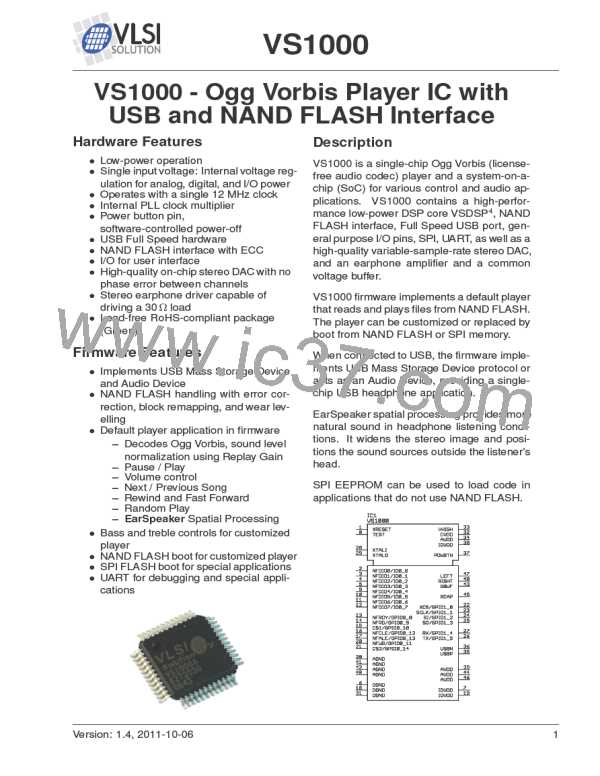VS1000
7
FIRMWARE OPERATION
7.6 EarSpeaker Spatial Processing
While listening to headphones the sound has a tendency to be localized inside the head. The
sound field becomes flat and lacking a sensation of dimensions. This is an unnatural, awkward
and sometimes even disturbing situation. This phenomenon is often referred in literature as
‘lateralization’, meaning ’in-the-head’ localization. Long-term listening to lateralized sound may
lead to listening fatigue.
All real-life sound sources are external, leaving traces of the acoustic wavefront that arrives to
the ear drums. From these traces, the auditory system in the brain is able to judge the distance
and angle of each sound source. In loudspeaker listening the sound is external and these
traces are available. In headphone listening these traces are missing or ambiguous.
The EarSpeaker processing makes listening via headphones more like listening to the same
music from real loudspeakers or live. Once EarSpeaker processing is activated, the instru-
ments are moved from inside to the outside of the head, making it easier to separate different
instruments (see figure 3). The listening experience becomes more natural and pleasant, and
the stereo image is sharper as the instruments are widely in front of the listener instead of being
inside the head.
Figure 3: EarSpeaker externalized sound sources vs. normal inside-the-head sound
Note that EarSpeaker differs from any common spatial processing effects, such as echo, reverb,
or bass boost. EarSpeaker accurately simulates the human auditory model and real listening
environment acoustics. Thus it does not change the tonal character of the music by introducing
artificial effects.
EarSpeaker processing can be parameterized to a few different modes, each simulating a little
different type of an acoustical situation and suiting different personal preferences as well as
different types of recording.
• Off: Best option when listening through loudspeakers or if the audio to be played contains
binaural preprocessing
• Minimal: Listening to normal musical scores with headphones, very subtle
• Normal: Listening to normal musical scores with headphones, moves sound source fur-
ther than minimal
• Extreme: Old or ’dry’ recordings, or if the audio to be played is artificial
Version: 1.4, 2011-10-06
22

 ETC [ ETC ]
ETC [ ETC ]